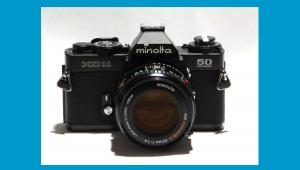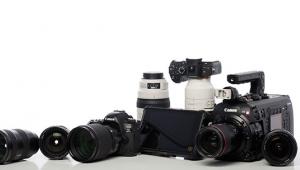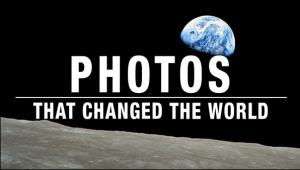The Photo Industrial Revolution
As 2014 draws to a close and I write the 100th installment of this column, I decided to reflect not on the future, but rather how the photo industry has evolved over the past 10 years or so. The pace of technical innovation in imaging gear has progressed so rapidly over the past decade, that is easy to forget how much has changed.
Ten years ago the digital-imaging revolution was in full swing and not only changed the manner in which we pursued our craft, but the business models of virtually everyone who manufactured, distributed and sold cameras and accessories. In 2004, digital camera sales grew 40% to over 18 million units. The following year digital camera sales accelerated to over 20.5 million units—accounting for 82% of camera sales (up from 73% in 2004). At the same time, the quality of digital cameras continued to improve, and resolution increased, while overall prices as well as the “cost-per-megapixel” trended downward. In short, it was pretty much all good news for the consumer.
For camera companies and retailers, however, it was more of a mixed bag. That’s because at the same time digital cameras were trending skyward, the market for film cameras dropped by almost 20 percent in 2004 to 650 million units and dropped to 530 million units the next year—a trend that would never be reversed. Complicating matters for everyone was the fact that all of a sudden the life cycle of many cameras came to be measured in months—rather than years.
So what were photographers buying during the holiday shopping season 10 years ago? That’s right: so-called “higher resolution” 4+ megapixel cameras. Overall, some 55% of digital cameras sold in 2004 were models with four megapixels or more as compared to only 30 percent a year earlier. In 2005, one of the most popular and innovative models was the Konica Minolta Dimage A2: An 8-megapixel camera with an electronic viewfinder, anti-shake technology, pop-up flash, solid magnesium alloy body, and a built-in 7X zoom lens which sold for around $800—from a company that no longer exists.
Some things we now take for granted, like Facebook and GPS technology, were new to our space back then. Both Facebook and Google Maps got their start in 2005, and today we have WiFi–connected cameras—some with Android operating systems—that you let you email images and post them to Facebook, and, yes, check your location (and much more) on the camera’s LCD by using Google Maps.
Throughout the last decade, of course, the so-called “digital convergence” not only changed the manner in which we capture images, but how we go about our daily lives. Less than four years ago Japan’s terrible Fukushima nuclear disaster took thousands of lives, displaced hundreds of thousands of people, devastated a country and brought the photo industry to it’s knees. The rebuilding continues to this day and we still pray for those who lost their lives and their loved ones.

















































